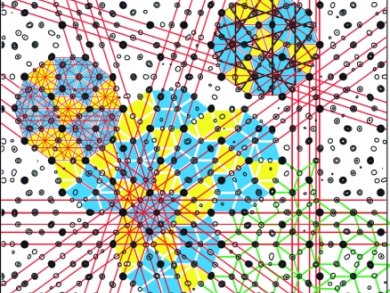Among inorganic solids, intermetallics are the least understood concerning relationships among their chemical compositions, bonding, and properties. They are defined as solid phases containing two or more metallic elements, with optionally one or more non-metallic elements, whose crystal structure differs from that of the other constituents. Since the majority of chemical elements are “metals”, even with thermodynamic constraints, the numbers, types, and complexity of intermetallic compounds are immense.
Unlike ionic and covalent compounds, it is virtually impossible to apply simple heuristic concepts to reliably deduce compositions, structural features, or the nature of the bonding from the elements involved – there are just no guiding rules, at present, in the search for new intermetallic compounds. This is mainly because some features of the metal–metal bond, such as the degrees of valence electron transfer and localization, vary strongly and almost continuously with composition and nature of the elements involved. The complexities of intermetallic structures and bonding patterns often pose great challenges for establishing structure-property relationships that would immensely facilitate the design and discovery of advanced energy materials.
Issue 13/2011 of ZAAC (Zeitschrift für Anorganische und Allgemeine Chemie) contains a diverse collection of articles emphasizing intermetallic compounds. The contributions range from novel synthetic strategies to obtain new compounds as well as to grow crystals suitable for specific measurements of physical properties, through complex structural problems solved by combinations of diffraction and electronic structure theory, to summarizing some important and novel applications for these materials.
Image: © Wiley-VCH
See also:




